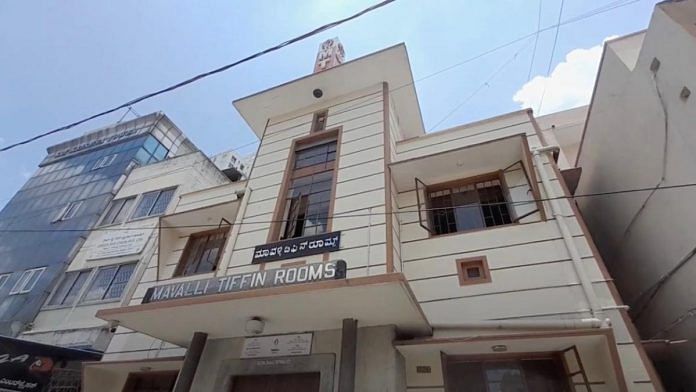Bengaluru: The Mavalli Tiffin Room at Bengaluru’s Lalbagh serves at least 800 rava idlis and 1,000 masala dosas on weekdays. The quantity doubles on weekends. The MTR chain is 100 years old now. But its third-generation owner Vikram Maiya, is a contrarian when he gives advice to young entrepreneurs.
“Don’t put your hard-earned money into running restaurants,” he said.
It’s the opposite of what he has in mind for Bengaluru’s beloved MTR. He’s going big, taking it to Canada, Australia, and the US. The Mavalli Tiffin Room may have roots in Lalbagh, where Parameshwara Maiya opened it in 1924. But after establishing 12 outlets in their home turf, Karnataka, Vikram Maiya is looking beyond India’s borders. He and his siblings are shedding the ‘caretaker’ mentality of their parents to make MTR an international brand like Saravana Bhavan.
“There can be an MTR anywhere and everywhere from Lalbagh to Seattle,” said Maiya. Today, there’s an MTR in London, Seattle, Singapore, Dubai, and three more cities in the world. Now, in its 100th year with a presence on Swiggy, it will have an outpost in Toronto as well. But the expansion plans are tempered with caution—the time-tested secret recipes of the family cannot be compromised.
“[The restaurant business] is fancy from the outside; hectic and demanding on the inside,” said 50-year-old Maiya, who is managing director of the restaurant chain along with his sister Hemamalini (53) and brother Arvind(40). Their youngest sister Priyadarshani (45) is a silent partner.
The Maiya siblings see themselves as guardians of the innovation that the original MTR introduced to Bengaluru before Independence. Even their rivals admire this.
“The Maiyas have dedicated their lives, generation after generation, to keep our food culture alive. Whenever we visit the MTR Lalbagh Road branch, we see our culture preserved,” said MTR’s biggest competitor, Raghavendra Rao who started Rameshwaram Cafe with his sister Divya three years ago.
MTR is where everyone—from Gen Z, 70-year-olds, and politicians to movie stars—find common ground over ghee-bathed Bisi bele bhath, fluffy rava idlis, and steaming hot filter coffee.
At 12:30 on a Wednesday afternoon, all the 250 seats at the original Lalbagh restaurant are occupied. Waiters heap rice, puris, potato sagu, mini dosas and chutney, pongal, sambhar and other freshly cooked items that are part of the famous unlimited thali—all for Rs 390. Maiya makes it a point to taste everything that comes out of the kitchen. But it’s impossible to have a conversation over the clang of vessels, and chatter of hungry patrons.
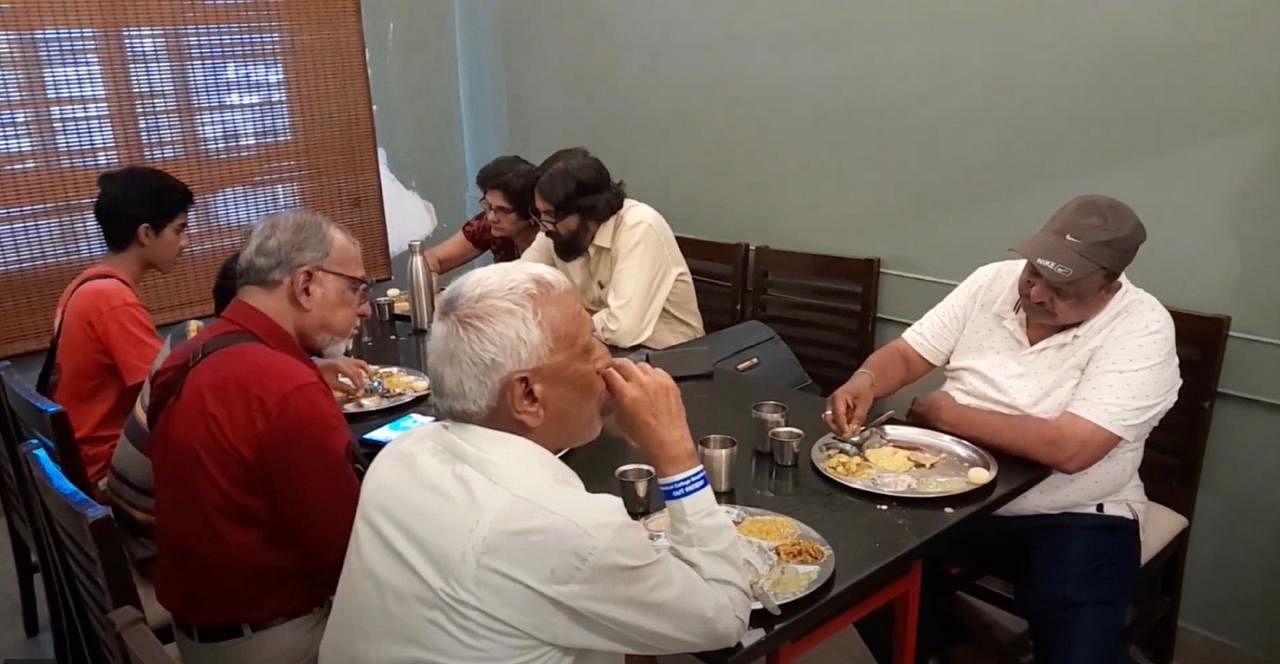
“Consistency is the name of the game, and we play it every day,” he said.
The Maiya siblings have not only managed to expand the family legacy but have also retained a loyal customer base, which won’t allow them to change a thing— from the red chairs to the ceramic plates. In Bengaluru, a city celebrated for its microbreweries, speakeasies, and pubs, MTR reigns supreme. It finds itself on bucket lists, must-eats, and essays on why it’s the hippest restaurant in the city. It’s as much a part of the city as other beloved gems like Koshy’s, established in 1940 in Ashok Nagar; Indian Coffee House, a Church Street fixture since 1958 with its signature chicory-free filter coffee; and the 1980s ice-cream chain Corner House.
“MTR isn’t just a restaurant; it’s history wrapped in a building. From Independence to World War II and the Emergency, it has witnessed it all. Even as Bengaluru has transformed into a high-tech city, MTR remains a portal to the old city,” said historian Rupa Rai.
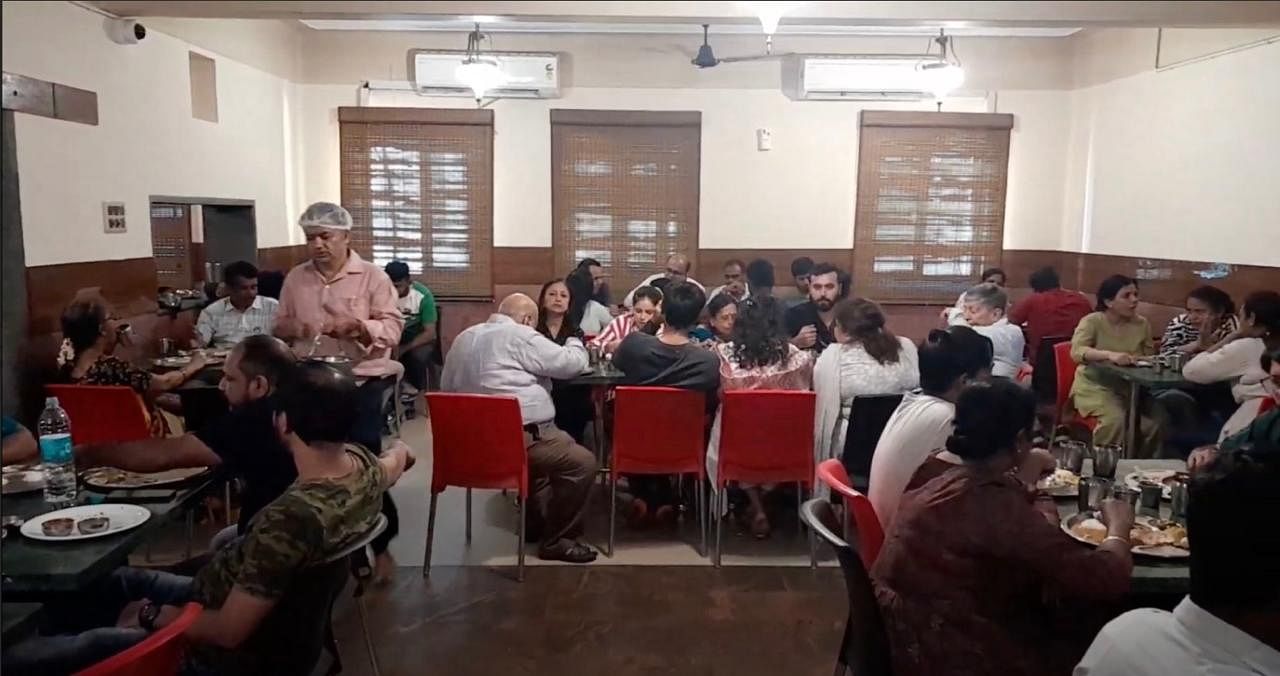
Lalbagh to Seattle
Vikram Maiya is using a franchise profit-sharing model to build MTR’s international brand. His key requirement is simple but crucial — three chefs.
“No chefs. No deal,” he said firmly.
Once the chefs for the international outlet are selected, they train in the Lalbagh kitchen for a year. There they are inducted into the world of MTR’s recipes—secrets that have been closely guarded for a century. They learn to grind rice and dal in the exact proportions for dosa and idli batter and boil ghee at 80-85 degrees. Chefs must master the basics before they can even progress to more complex dishes like pudi dosa and rava idli.
The family’s standardised cooking methods leave little to chance. Everything—from the quality of ingredients and spices to the roasting of coffee beans—has the same rulebook. No deviations are allowed.
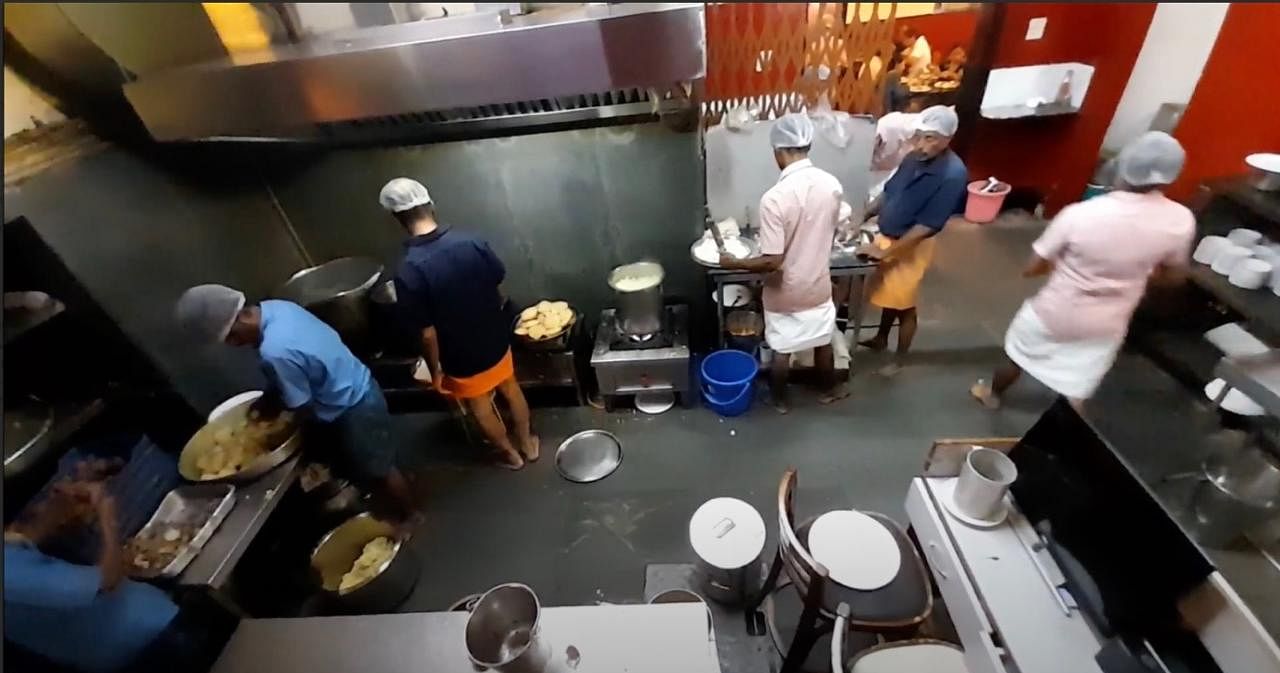
“It was absolute madness and chaos.”
But many deals fall through the cracks, said Maiya. He prefers hiring local chefs from Karnataka but that can be tricky due to barriers like English proficiency, work permits, and so on.
Maiya wants MTR’s growth to be organic. It’s how MTR began to expand within Karnataka in 1999 when his sister Hema took over the reins after their father Harishchandra’s death. Vikram Maiya joined her in 2001.
“Sunday mornings at MTR Lalbagh road used to be borderline sadism,” said Maiya, describing the throng of residents and tourists converging outside the restaurant. “It was absolute madness and chaos.”
It’s what got him to think of expanding MTR. By 2004, Vikram and Hema had opened a second outlet in Rajajinagar followed by two more in quick succession in JP Nagar and Whitefield between 2009 and 2010. The first international MTR opened in Singapore back in 2013. And last December, the Seattle outlet opened. Incidentally, there’s no Saravana Bhavan in Seattle. (The popular Chennai eatery has outlets in California, New York City, and New Jersey in the US.)
Vikram Maiya was not surprised that many patrons at international outlets were not of Indian origin. He learned that nobody can resist a masala dosa when MTR opened its first international branch in Singapore back in 2013.
“It was a total mayhem—pure chaos,” he recalled, burying his face in his hands. There were serpentine queues, and the team was overwhelmed, but the food was good. Maiya was touched to meet visitors from his hometown, Parampalli in the Udupi district, who remembered dining at the Lalbagh outlet as children. They were better prepared when MTR opened its second international outpost in Dubai, a month after the inauguration in Singapore.
On the one hand, the Maiya siblings are militant about not deviating from the recipes but on the other, they are fighting the family’s tendency to keep things the same. Until they took over, expansion was never on the cards.
“It was very much like: ‘Take care of whatever has been handed down. Look after it and nurture it.’ Initially, even we had the mindset of a caretaker,” Maiya said.
Last week, Maiya received a letter from Frankfurt. It’s from a young entrepreneur interested in introducing MTR to Germany.
“Talks are underway. I don’t mind expanding in Germany as well but they better get me three chefs,” he said.
‘It’s pure nostalgia’
Regular customers are well-versed with MTR’s weekly menu—honey halwa on Wednesday, banana kesari bhat on Thursday, badam halwa on Friday, chandrahara on Sundays, and rava dosa only in the evenings.
It’s a rite of passage for families who have ‘inherited’ stories of their parents and grandparents drinking coffee at the original Lalbagh restaurant.
“I’ve been coming here for over 50 years since I was a little girl. The flavours, the ambiance, the hustle and bustle — everything is still the same,” said Ritu, who was enjoying brunch at MTR with daughter Radhika and her five-year-old grandson. The family makes it a point to eat at the Lalbagh outlet whenever Radhika visits from Washington, where she now lives.
“The masala dosa, sambhar and chutneys, you will not find anything close to it anywhere in Bengaluru,” said Radhika. “We visit MTR’s Seattle branch quite often, but this one holds so many memories. It’s pure nostalgia.”
Vikram Maiya would be gratified to hear this—it’s a concerted effort by the family to not dilute the ‘innovations’ introduced by Yagnanarayana Maiya back in the day. He came up with the rava idli as a solution to the rice shortage during World War II. In her book, Business on a Platter: What Makes Restaurants Sizzle or Fizzle Out, author Anoothi Vishal lists canned fruit and ice cream as another innovation. Like the rava idli, it became an iconic MTR dish.
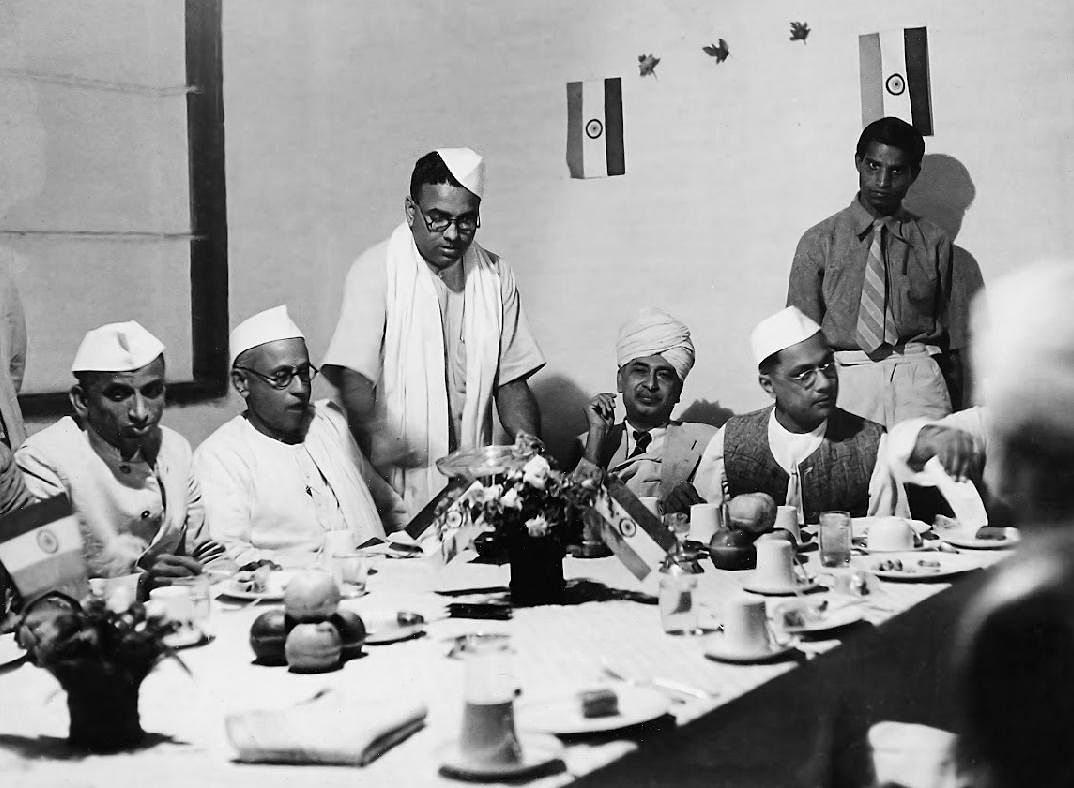
“The recipe for bisi bele bhath, another bestseller, that the restaurant still follows was improvised by him [Yagnanarayana],” Hemamalini told Vishal, which is mentioned in the book. The original Mysuru dish is not as spicy as the MTR one.
“So popular is the MTR version that a person who has eaten this may be excused for believing that it is the “authentic” version,” Vishal wrote.
Loyal patrons are adamant about preserving this slice of heritage. Any changes made by the third-generation Maiyas were met with horror and protests. Vikram Maiya recalled how they once considered removing the red chairs. But they quickly backtracked following the hue and cry. When they switched from ceramic to melamine plates, people insisted that food just didn’t taste the same.
Lunch hour is pure mayhem, but there’s a method to the madness, Vikram Maiya said. In the kitchen, at least a dozen cooks are busy making dosas, chopping onions and potatoes, rolling out puris, and keeping an eye on simmering pots of sambar.
Everything is served with tiny bowls of ghee. There are machines to grind batters for dosas, vadas, and idlis. A chef empties three packets of curds into a bowl of semolina, followed by fistfuls of chopped coriander, curry leaves, and a mix of spices. He, then, immerses his hand into the batter to give it a good mix.
“Nothing comes close to a cook using his hand,” said Vikram Maiya.
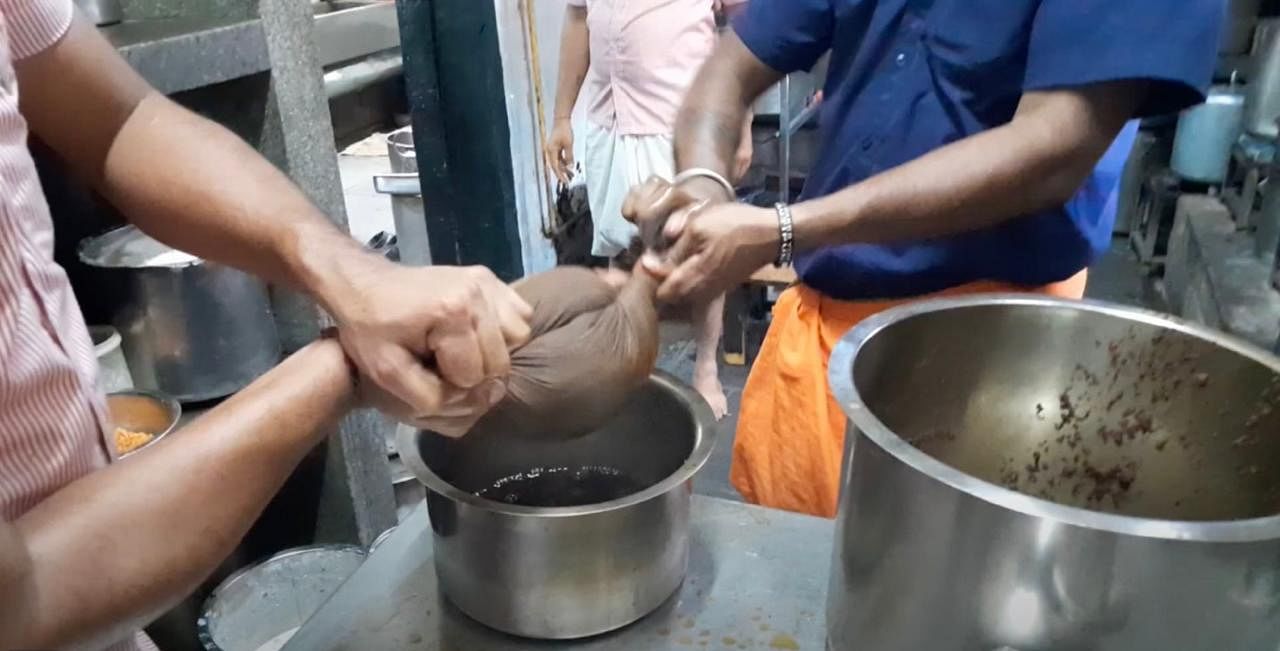
In the dining area, staff approach tables, serving each dish in sequence. The air is redolent with the aroma of ghee. The unlimited meal is bookended with a glass of rasam and seasonal fruits with MTR’s very own ice cream.
It was Sweety Prasad’s first MTR experience since moving to Bengaluru three years ago. “My colleagues have been raving about MTR, so here I am. The aroma from the kitchen is already giving me hunger pangs,” the 33-year-old said, skillfully juggling her toddler while tapping away on her laptop.
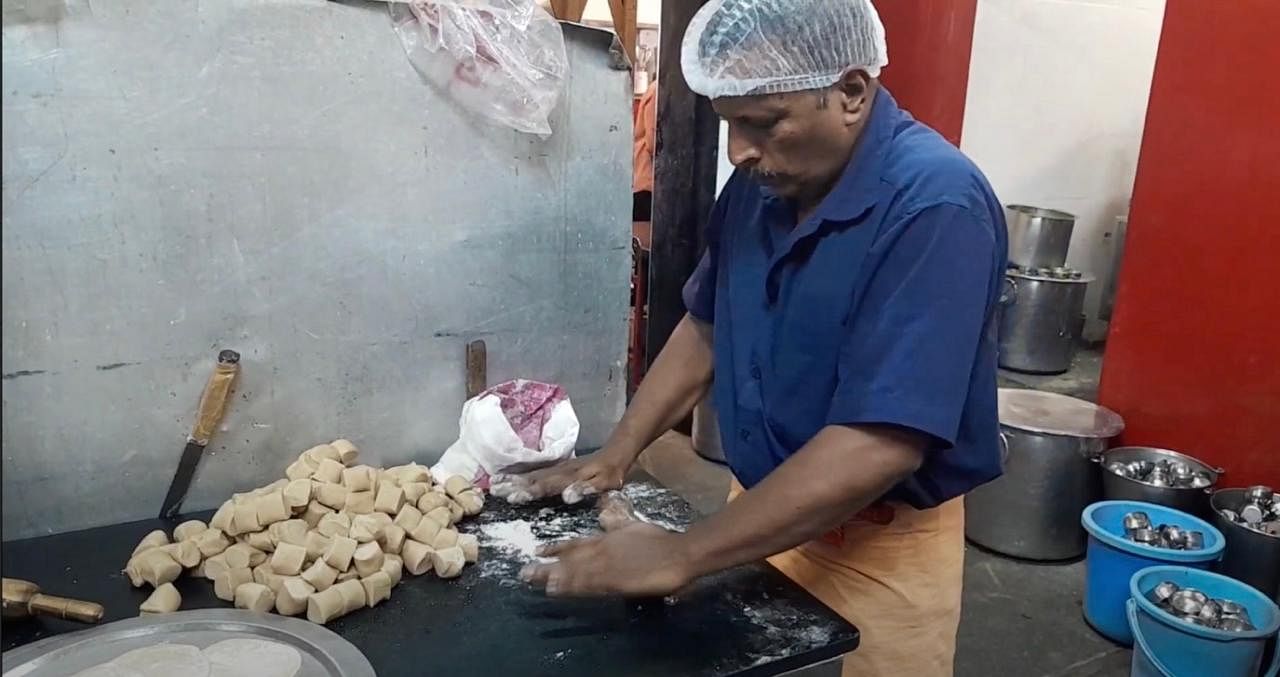
The server arrived with a plate of piping hot mini masala dosa, sambar and chutneys. It is generously slathered with desi ghee and podi masala. The laptop is put away, and the table falls silent as everyone digs in.
Turning crisis into culinary triumph
MTR is steeped in Old Mysore region’s Brahmin food and traditions. Even today, nobody can enter the kitchen wearing slippers.
“MTR’s Lalbagh Road location is a powerhouse in South Bengaluru, especially among the Brahmin community. However, its other branches haven’t replicated that success. An MTR outlet in Malleshwaram wouldn’t draw the same crowd as Veena Stores,” said Chethan Hegde, Bengaluru Chapter Head of the National Restaurant Association of India (NRAI). But charm and nostalgia are in its Lalbagh branch.
“They couldn’t expand their magic to other outlets, the way Rameshwaram Cafe did,” he added, referring to the very new but hugely popular eatery that’s been taking over Bengaluru since 2021.
In its first iteration, MTR was the Brahmin Coffee Club, started by Parameshwara Maiya. He and his brothers, Ganappayya and Yagnanarayana, moved from their hometown in Parampalli to Bengaluru in the 1920s where they worked as cooks for prominent families. Parameshwara, with the support of a former employer, opened the Brahmin Coffee Club at Lalbagh Fort Road. When he died, Yagnanarayana stepped in, and ‘revolutionised’ the restaurant, which until then served only idlis and coffee.
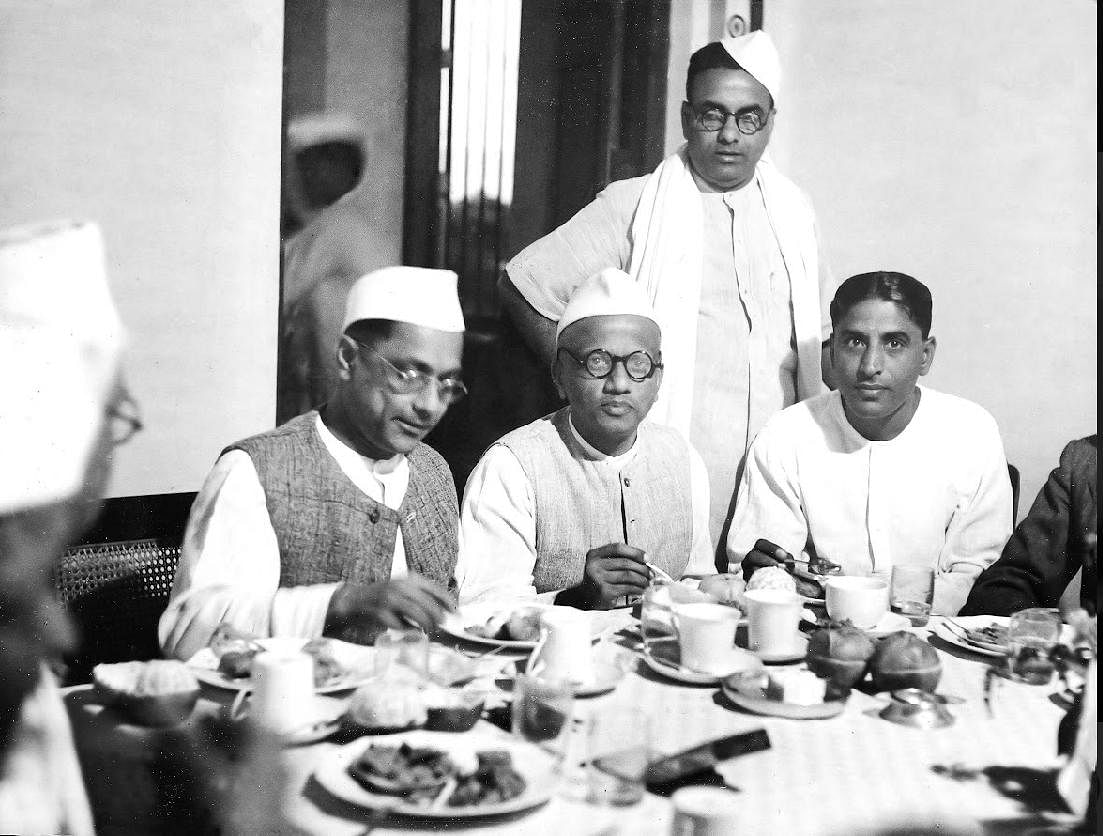
By 1960, it had moved to its present location and was renamed Mavalli Tiffin Room. But the real game-changer was in 1951 when Yagnanarayana went to Europe to study dining standards.
“On his English sojourn, Yagnanarayana also saw cups and saucers used to serve coffee. Once he returned to Bangalore, he decided to use china in his restaurant too. Then there were moves like introducing small booklets for customers, giving them instructions on dining etiquette,” wrote Vishal, adding that patrons were asked not to comb their hair in the dining hall, and to leave curry leaves on their plates. “The customers were being educated on manners – and they didn’t mind.”
During World War II, when rice was scarce, the introduction of rava idli—a semolina-based variation of the classic idli—turned a crisis into a culinary triumph. Later, in the mid-1970s during the Emergency, when the Food Control Act imposed price caps, MTR faced financial strain. Initially, they put out a board to show their daily losses, but eventually, they closed the restaurant temporarily.
“We had already bought the adjacent building, which was then refurbished as a departmental store. My father and my uncle started selling dosa and idli batters, instant mix and masalas — with zero shelf-life,” said Vikram Maiya.
When the restaurant resumed operations in 1981, Vikram’s father Harishchandra took over the restaurant, while his uncle worked toward building another strong arm of MTR — the packaged foods. Later, the packaged food wing was sold to a Norwegian company for $80 million in 2007. However, the departmental store is still up and running next to the MTR Lalbagh branch.
Unlike his uncle, Vikram and his siblings have no plans of selling the restaurant chain.
“If we talk about the fourth generation, there is just my son. My other three siblings are not married and my son is least interested in taking on the mantle. But, we have full faith in finding someone who can keep the MTR legacy alive, it need not necessarily be a Maiya,” he said.
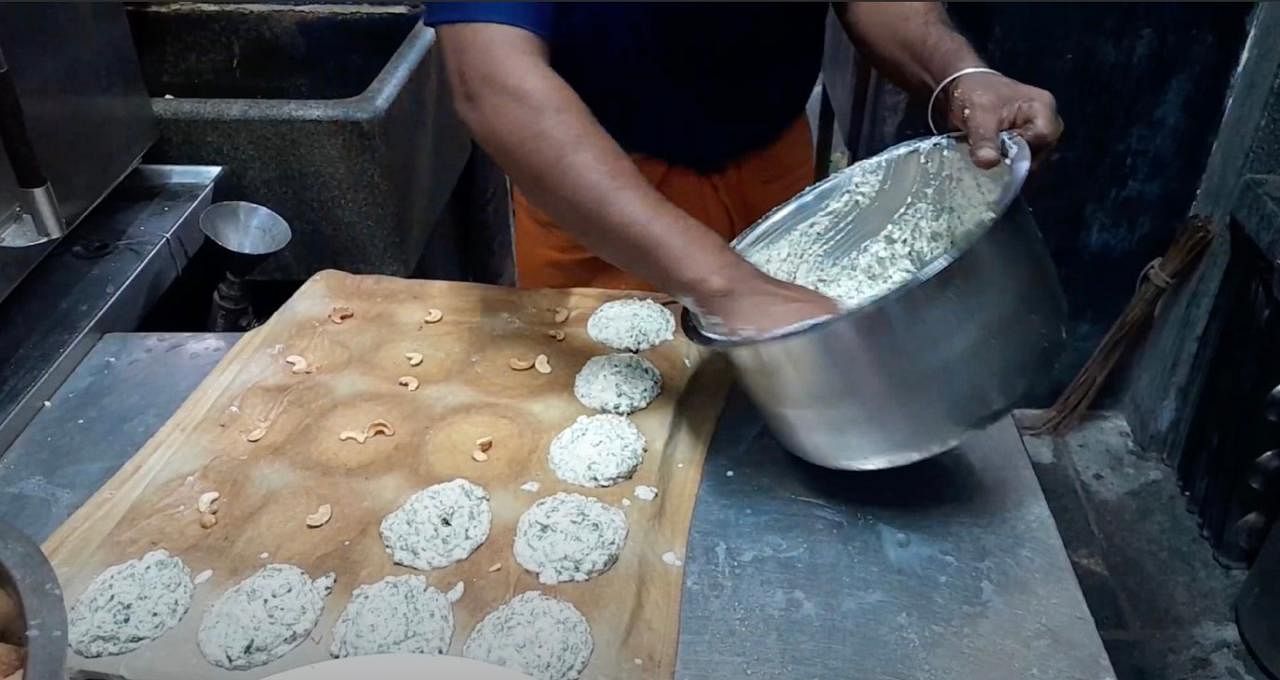
Carrying forward legacy
Vikram Maiya never expected to be pulled into the family business. When his father died in 1999, he was working in a bank. No one knew what would happen to MTR. Hema stepped in to take charge.
“At first, it was hard to accept that dad was no more. And, then the internal politics — I’ll just say they were tough times,” Vikram said. It was Hema who faced the brunt of sexism in a predominantly male industry.
“There were many staff members who knew us as kids, and now, we were instructing them— telling them what to do and what not to do. It hurt their egos,” he said.
Winning customers’ and staff’s trust took years. There was no plan B; the siblings had to run the restaurant and keep the legacy alive. Over time, they added new dishes— kesari bhat, lemon rice, pudina rice and more — to their long-standing menu. But left the original dishes untouched.
“His loss (Harishchandra) felt personal. We had zero expectations from his children because they were never around. But, I am glad they proved us all wrong. Because we continue to get our filter coffee the way it has always been,” said Krishna Madar, a regular visitor at MTR.
Even the owners of Rameshwaram Cafe, which has become famous for its ghee podi idlis, ghee thatte idli, and garlic roast dosa, acknowledge MTR’s “legendary” status.
“When I am in South Bengaluru, I visit MTR to eat the rava idli with ghee,” said Rameshwaram Cafe’s owner. “And, if it’s a Thursday, I have to eat their chandrahara.” The chandrahara, which is now served on Sundays, is a dessert made with maida flour and deep-fried to perfection. It is topped with a thick, sweet liquid made from khoa.
(Edited by Ratan Priya)



